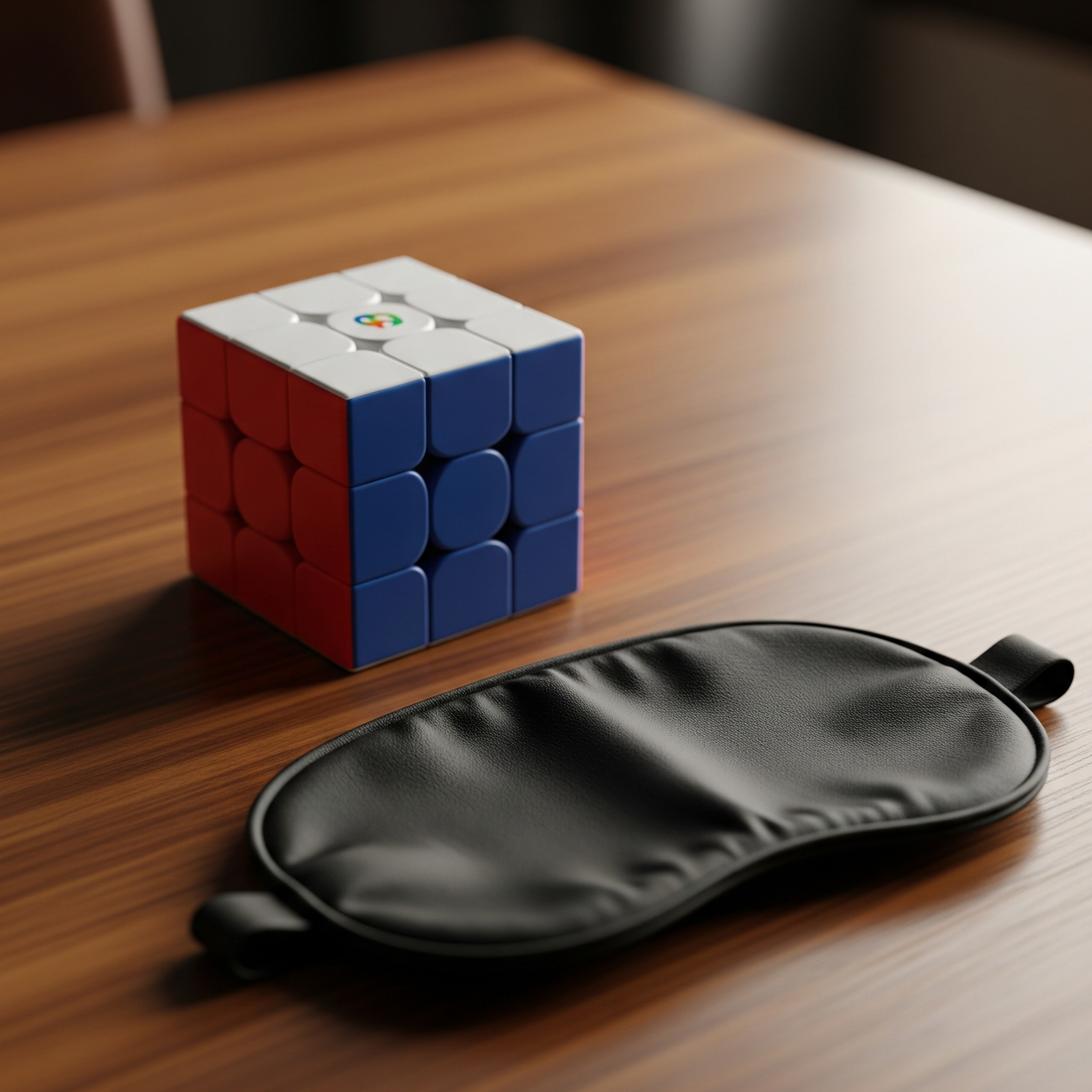Introduction to 3x3 Blindfolded Cubing (3BLD)
Blindfolded cubing—commonly abbreviated as 3BLD—is one of the most fascinating and mentally demanding disciplines in the speedcubing world. Unlike a standard timed solve where you watch your hands and the puzzle, 3BLD asks you to memorize the entire state of the cube and then perform the solve entirely blindfolded. That combination of spatial reasoning, algorithmic execution, and memory training turns a physical dexterity challenge into an exercise of precise mental discipline. For many practitioners, the appeal is not only the spectacle but the deep satisfaction of converting a chaotic scramble into an ordered mental map and then realizing it through practiced fingerwork.

Breaking the Process Down: Memorization and Execution
A useful way to approach 3BLD is to accept that it naturally splits into two distinct phases: memorization and execution. Memorization is the part that most beginners find intimidating because it asks you to convert the cube's physical arrangement into a mental representation that you can reliably recall. This is rarely done in one pass; solvers typically focus on edges first (which are easier to handle in many methods) and then corners, or vice versa depending on their chosen system. Execution is the stage where you put the blindfold on and perform the algorithms that actually rearrange pieces into place following your memorized sequence. The important thing to stress at this stage is accuracy: speed will follow if your memorization-to-execution pipeline is reliable. Practicing each phase in isolation—memorize a short sequence, remove the blindfold, check, then repeat—builds confidence and reduces catastrophic errors during full solves.
Initial Methods: Practical Choices for Beginners
When you’re just starting, you don’t need the most advanced or compact systems—what you need are consistent, learnable methods. Two classic, beginner-friendly approaches are M2 (for edges) and Old Pochmann (for corners and/or edges depending on variant). M2 treats edges with a simple two-cycle method that is algorithmically minimal and easy to remember; this makes edge memorization straightforward and gives beginners a steady path toward full solves. Old Pochmann is often used for corners because it reduces corner cycles to repeated applications of a small set of algorithms, which you can practice to the point they become reflexive. Many newcomers combine these two: use M2 to handle edges and Old Pochmann for corners, which gives a clear, modular practice path—master one piece type at a time, then integrate them.
There are alternatives (for example, commutator-based methods or advanced letter-pair pipelines such as Orozco-style systems), but those are usually introduced after you have a stable workflow with the beginner methods. The beginner methods trade some move efficiency for conceptual simplicity, and that tradeoff is exactly what you want while you’re focusing on building reliable memorization and execution habits.
Your First Blindfolded Solve: The Easiest Method to Get Started
Memory Techniques: From Letters to Stories
Memorization for 3BLD is where the craft becomes almost artistic. The most common approach is a letter system: assign each slot (edge or corner position) a letter, then convert the sequence of positions into a string of letters. From those letters you form words or short images—this is where techniques diverge. Some solvers use direct words (e.g., letter pair “AT” → “apple + tree”), others use a visual image per letter and chain the images into a short story (the so-called memory palace technique). The memory palace is particularly powerful: you map each piece image to a familiar location in a mental space, then walk that route to recall the sequence.
Another practical trick is chunking. Instead of trying to memorize 40+ items at once, break sequences into small groups—triplets or quads—then memorize those groups. Rehearse each chunk aloud or in your head several times before moving on. Finally, create redundancy: when possible, encode both edges and corners in ways that cross-check each other so a mistake in one place becomes easier to detect before execution. The combination of a simple letter mapping, vivid imagery, and predictable chunk sizes makes recall during the solve far more reliable.
Related blog:
Memorization Techniques
Practice Routines and Common Pitfalls
A sensible practice routine pushes you incrementally. Start with exercises such as: memorize 6 edges and then solve them without a blindfold; next session try 12; work up gradually. Time your memorization separately from your execution—knowing how long it takes you to memorize a given amount is crucial for planning in real attempts. Record sessions and keep a log: what images you used, where you made mistakes, and which algorithms felt slow. Common mistakes include overcomplicating images (which are hard to recall under stress), skipping rehearsal steps, and rushing execution. To avoid these, keep images simple and consistent, always review your sequence once more before putting the blindfold on, and prioritize slow, steady, correct execution when you’re learning algorithms.
Tools and Resources That Help
You don’t need exotic tools—basic timers, a letter-pair trainer web tool, and an Anki deck to rehearse letter associations go a long way. Many solvers build small utilities to generate scrambles tailored to blindfold practice, tools to convert piece indices to letters automatically, or Anki decks with images for each letter pair. These resources let you practice parts of the pipeline independently and accelerate learning because repetition becomes structured and measurable.
Test our deck creation tool.
Conclusion: A Long but Rewarding Road
3x3 blindfolded solving is a long-term project that rewards patience and structure. The initial phase—picking simple, repeatable methods, establishing memorization habits, and practicing execution deliberately—sets the foundation. Over time you’ll refine your memory imagery, discover which algorithms feel quickest for you, and develop a personal workflow that scales from single-piece practice to complete full solves. Above all, remember that improvement is incremental: small, consistent gains compound into swift, accurate solves. The discipline of 3BLD cultivates not just cubing skill but a type of focused memory training that feels valuable on its own.
Published on 2025-08-14